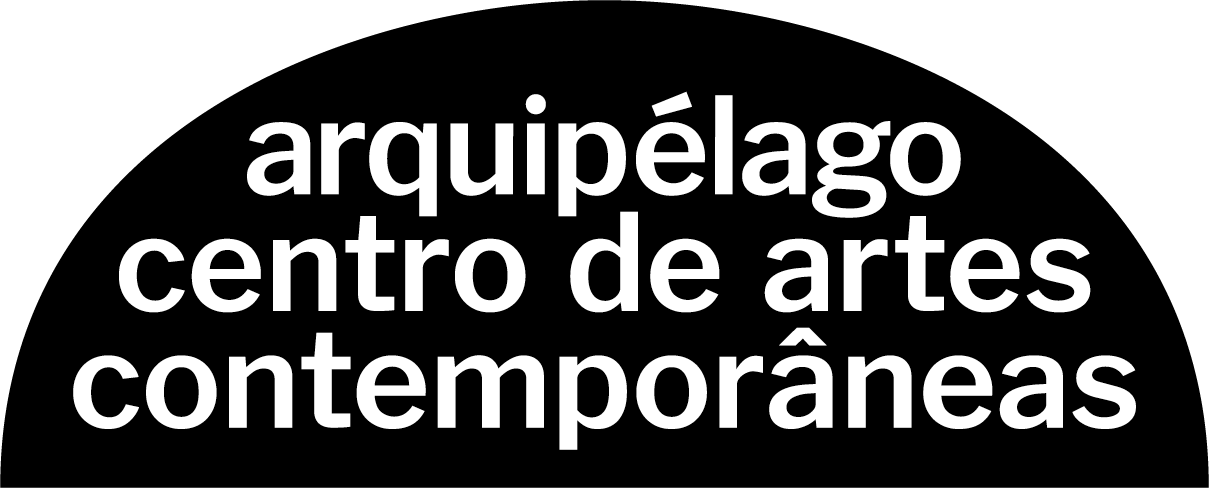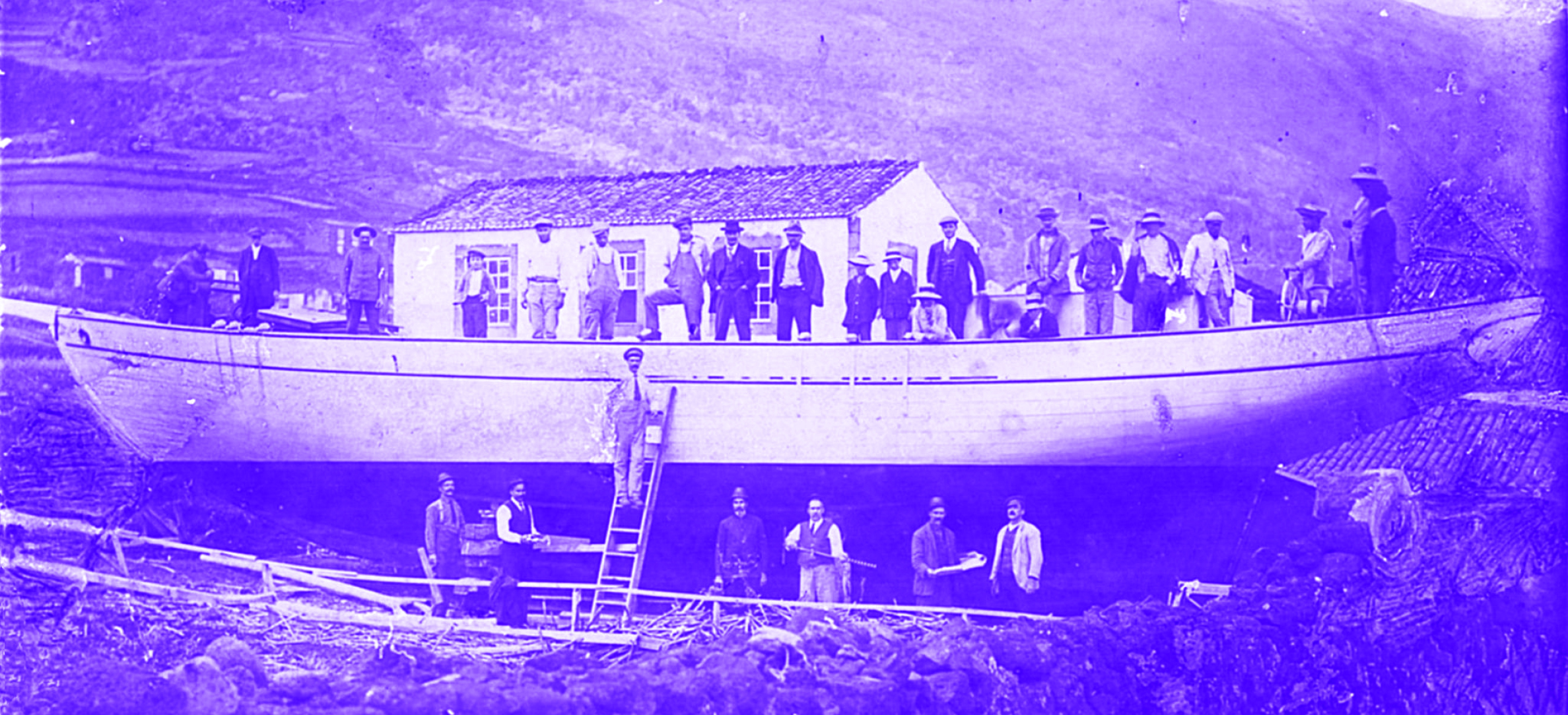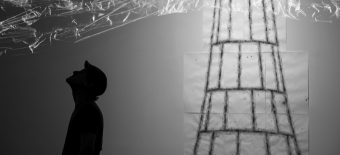HOW TO
BUILD AN ISLAND – ÚTERUS AZORICA
Exhibition
Jan 25th - Mar 15th 2020EXHIBITION
How to Build an Island – Úterus Azorica
in the Use&Abuse’s framework
Jan 18th 2020 – Mar 15th 2020
Opening | Jan 25th 2020 // 6 pm
Curator: Bernardo Rodrigues
The ARQUIPÉLAGO – Contemporary Arts Center will host the exhibition How to Build an Island – Úterus Azorica under the curatorship of Bernardo Rodrigues within the Use&Abuse’s contest, an initiative of PICA – Creative Industries Platform of the Azores, which sets its goal in reinventing and reimagining the endogenous resources of the Azores such as rocks, fibers, sole and wood, ensuring their sustainable use and shaping them into something other than the obvious so they can bring along more value to the archipelago.
—-
How to Build an Island – Úterus Azorica
” 1- The first settlers of the Azores brought with them, in the boats they used to journey across the Atlantic, the idea of the houses they used to live in: in Alentejo, in Flanders and in Brittany. They arranged them in rows along the coast, always facing the land, protected from the dangers of the sea: long umbilical cords on a sublime but otherwise harsh landscape. Nature as paradise and entrails. Maternal ancestry.
2- The evidence for an uncontrolled social acceleration guided by a velocity of senses that is increasingly difficult to placate are the symptoms of a contemporary unease that affects us all. As a counterpoint to all this, German sociologist Hartmut Rosa proposes a Resonance of concrete things as a spectrum for a reunion with the world, with time, with the value of experience and with a temporality that puts life back at the center of things.
3- Showcasing the works by the winners and participants of the four design competitions organized by the LREC to promote Azorean rock, wood, soils and fibers, this exhibition suggests applying these ideas and knowledge, using endogenous materials in building and construction projects. Against accelerated and devalued oversimplifications.
The show highlights a chain of relationships and resonances between the raw materials and their extraction, working with them while summoning their history and associated know-hows, delivering them into the world of science, academia and advanced industries in a visionary and intelligent dance. An alphabet of survival and prosperity.
4- The promises of the 20th century left humans somehow deterritorialized, homeless in their cities. The Azorean landscape and population clusters are very sensitive to this.
In the 21st century, we are confronted with the consequences of this split and imbalance, like a leaning table or bed where it is difficult to eat or sleep.
5- How to do it? How to build an island?
Perhaps we need a new gaze, a new perspective on the millennial relationship between humans and nature. A mastery in the use of the natural forces of integration and resonance.
To listen to how the world sings, the music of materials.
An Azorean Uterus. ”
—
List of works on display
Sam Baron
Asentar, 2019
Winner Rocks
Square stool
Long bench 1
Long bench 2
Chaise longue
Round stool
Basalt
Sónia Soeiro
Toothbrush, 2019
Winner Fibers
Composite material reinforced with ginger lily fiber and polyamide (filaments)
Caterina Plenzick
Katrin Krupka
Endogenous, 2019
Winner Soils
Pozzolan, lime, water and casein
Gonçalo Campos
Wine Rack, 2019
Winner Woodworks
Cryptomeria
Filipa Silva
Picoruto, 2020
Honorable Mention Rocks
Basalt
Ana Rita Campos
Sónia Domingos
Dropper, 2019
Honorable Mention Fibers
Composite material reinforced with ginger lily fiber
—-
Biographical Notes
Bernardo Rodrigues, Ponta Delgada 1972
Master’s degree at Columbia University, New York, 1999. He collaborated with Atelier 15, Alexandre Alves Costa and Sérgio Fernandez 96-97. Internship in London, Donald Insall & associates in the recovery of Windsor Castle and Cambridge University Library, 1995. He completed the Architecture Course at the Faculty of Architecture of Universidade do Porto, 1996. He opened his own studio in Porto in 2001.
The work he has produced focusing on sensory narratives has given him international visibility, and he was invited to exhibit, teach and lecture on his work and related topics. Casa do Voo dos Pássaros, in Azores, was featured on several articles and interviews, in speciality magazines around the world and in the New York Times.
In 2018, Capela Luz Eterna was nominated to the Eu Mies Award, a video of the work was shown in the exhibition Building Stories at the CCB Lisboa. 2017, Sushi Restaurant for the Open House Lisboa. Work for the inaugural exhibition of the Casa da Arquitectura Matosinhos. 2016, lecture at the Lisbon Triennale. Was included in the Portuguese pavilion at the Milan Triennale. 2014, guest tutor at the Iberian seminar, Fronteiras. Jury and lecturer in Ekaterinburg, Russia. 2013, included in the Portuguese pavilion at the São Paulo Brazil Biennial. In 2012 and 2011 he exhibited and lectured at Prague Castle; in 2011, at the Museu do Oriente de Lisboa; 2010, Istanbul; 2009 in London; in 2008 he represented Portugal in Tokyo at the invitation of Peter Cook and Toyo Ito; in 2007 in Yale; in 2006 in S. Paulo and Lisbon (Experimenta); in 2005 at the Milan Triennale; and in 2004 at the Venice Biennial.
—
Caterina Plenzick & Katrin Krupka
Born in Benevento, Italy in 1982, Caterina Plenzick studied architecture and ethnology in Italy and gained her Bachelor of Arts in Ethnology in Rome in 2008 as well as her BA in Product Design in 2016 in Potsdam, Germany. She was working for Johanna Dehio in Berlin and realised several interior design projects in Germany. As anthropologist and designer based between Portugal and Germany Caterina’s work, today ranges from experimental material investigations and product concepts as well as spatial design, with a focus on critical approaches to sustainability and the significance of design practices as interpretation and translation of cultural heritage.
Born in Hanover, Germany in 1981, Katrin studied German philology, history and architecture and initially worked as a independent bag designer in Hanover. During her design studies in Potsdam, she gained experience in the studio of Hermann August Weizenegger and Culture form. After graduating in 2015 with the Master of Arts Design, she worked for Max Borka in Berlin and Benjamin Hubert in London. Since 2014, Katrin is working independently in the field of design and universitary teaching with a special focus on new sustainable materials and processes for product design. Her studio is based in Berlin, she teaches at different Universities like UDK Berlin, Burg Giebichenstein, Berlin International and Bauhaus University Weimar.
As a team, Caterina and Katrin design materials, processes and objects on the edge between, craft and industry. Throughout their research-based practice, they explore boundaries between design and art and reveal new potentials of materials and technologies in studies and experiments.
Caterina and Katrin develop sustainable materials and products with a unique appearance to reduce waste, by using new bio-based materials as well as alternative and energy-saving production processes to lower environmental impact. They have received several awards for their joint work.
Gonçalo Campos
Gonçalo Campos arrives to simple and unexpected solutions using common materials and production methods, in a process that starts from the object and its production. This process results in distinct and surprising objects that emerge from his imagination, curiosity and attention to the world. Gonçalo collaborates with different international brands designing furniture, lighting and as a consultant, helping to balance creativity and pragmatism.
Sam Baron
Born in France, Sam Baron has a degree in Design from the Fine Arts School of Saint Etienne and a post-graduate degree from the National Decorative Arts School of Paris.
Baron loves to reinterpret traditional methods of construction, raising questions about the utility of today’s material productions. He creates products, exhibition and interior design projects, giving life to cross-over works mixing art and design.
He is an independent designer and consultant for international companies such as Louis Vuitton, La Redoute, Vista Alegre and the French liquor brand Hennessy. He has been consultant as Design director for Fabrica, the international communication research center based in Italy, during a decade.
In 2009 Baron received the ” Grand Prix de la Creation de la Ville de Paris ” in the design category and in 2010 Philippe Starck selected him as one of the ten important designers of the next decade. Recently Sam has been awarded with the special PAD paris fair price. Sam Baron currently lives and works between Portugal and France where he recently took part of the think tank platform Thinkers&Doers.
Sónia Soeiro
Sónia Soeiro was born in 1993 in Porto, Portugal. In 2008, she started her studies in the field of design in the Product Design course at the Infante D. Henrique Secondary School, Porto. In 2015, she graduated in Industrial Design from ESEIG (Higher School of Industrial Studies and Management), currently ESMAD, Polytechnic Institute of Porto. During her training, she was part of the first edition of the Product Development Project Course promoted by Allto Design Factory (Aalto University, Finland) and Porto Design Factory (Polytechnic Institute of Porto, Portugal). She collaborated with the architecture studio Actual Arquitectos between 2011 and 2014 and, in 2015, joined the team of Studio Christian Haas, where she is currently Assistant Designer. At the same time, she has been developing projects in collaboration with colleges and research companies, with a particular interest in waste utilization, where she has seen her work recognized.
Ana Rita Campos
Ana Rita da Rocha Peixoto Campos was born in Braga in 1976. She completed her studies in architecture at the Faculdade de Arquitetura de Lisboa. She was an intern at an architecture studio in Barcelona and moved to Faial in 2001, having contributed to the reconstruction after the earthquake in 1998. In 2006, she was hired by Urbhorta, a city company where she is the Director of the Department of Management and Urbanism. In 2011, she specialized in Urban Project Management and Public Space at the Universitat Oberta de Catalunya.
Enjoying a good challenge, she was the recipient of a scholarship for the International Course on Sustainable Cities Management, which took place in 2015 in the Dominican Republic, where she represented Portugal in a group of 21 professionals from each of the countries of the Centro Latinoamericano de Administración para el Desarrollo. There, she developed a case study on the Faial Island based on a “Proposal for the creation of a center for experimentation and development of sustainable technologies for small and medium island areas”.
Among other projects, she coordinated the team that developed a project that combined the improvement of urban mobility and sustainability with heritage through thematic visits called “Garden on Wheels”, available at http://turismo.cmhorta.pt/images/Guia_HortaSobreRodas_EN. pdf>. More recently, she coordinated the reconversion and expansion project of the Municipal Market, located in the “heart” of Horta’s Historic Center, and created a Business Center, with the main objective of promoting, stimulating and developing innovation and entrepreneurship, a space for hosting and promoting projects related to Azorean agri-food products and heritage, the sea economy, tourism, services and sustainability.
In her leisure time, she likes to paint in watercolor, to work with various crafts, to travel and has a special fascination for libraries.
Filipa Silva
Filipa Silva was born in 1993 in the city of Setúbal. She studied Design at the Universidade de Évora and got her master’s degree at the Faculdade de Belas Artes no Porto. She currently works as an industrial and product designer in a studio in Lisbon. She has a special love for the traditions, the culture, the crafts and materials of her native Portugal. She loves imagining and creating products for interior spaces and has been developing some projects in her own time.
Sónia Domingos
Sónia Alexandra Ramalho Domingos was born in Lisbon in 1975.
She graduated in History / Variant of Art History at the Faculty of Social and Human Sciences of Universidade Nova de Lisboa, where continued her studies, pursuing a postgraduation in Educational Training and a master’s degree in Historic Heritage (2011), which she completed with her project for the Recovery and Cultural Development of the Windmills of Faial Island, after she decided to settle in the island, in 2010.
She is a certified Conservationist and Restorer of Ancient Painting on Wood or Canvas, and holds a technical degree granted by the Instituto de Artes e Ofícios da Universidade Autónoma de Lisboa (2002-2003).
She also attended the Free Course in Conservation and Restoration of Porcelain, Faience and Glass at the Fundação Ricardo Espírito Santo e Silva. She has worked for the Directorate General of National Buildings and Monuments (DGEMN).
She attended Tourism Management training at UNESCO World Heritage Sites proposed by Université Paris 1 Panthéon-Sorbonne, published on the FUN-MOOC platform (2018).
She has worked as an heritage technician and history researcher for the elaboration of cultural and heritage analysis content for Central Studio, Arquitectura / Urbanismo Lda, in several public rehabilitation and reconstruction projects, such as the Escola do Mar no Faial.
She is currently completing the Postgraduate Degree in Management of the Intangible Cultural Heritage, 5CHorte de la Facultad de Ciencias Económicas de la Universidad Nacional de Córdoba, Argentina.
She has worked as Conservation and Restoration technician in several projects, such as the Palácio Pombal in Lisbon, Convento do Espinheiro in Évora, Teatro Circo de Braga and in several churches in Faial, among other places.
In addition, she devoted herself to several works in the same area.
—
Resonances
The Resonances Section is made up of an occupation of the 24 silos of the Archipelago Arts Center as a Periodic Table of infl uences and intuitions around the work and materials exhibited at the Central Exhibition “How to Build an Island – Úterus Azorica”.
A pulse algorithm is promoted through pieces, projects, photography, thoughts and installations of authors that, due to their diversity, multiply visions and amplify possibilities by proposing a polyphony of resonances of the world.
1—Samuel Beckett—image from EndGame.
2—Pedro Costa—postcard of Vitalina Varela.
3—Peter Sloterdijk—Excerpt from Spheres.
4—Hartmut Rosa—Resonance Excerpt.
5—Anne Sexton—Excerpt of poem “In Celebration Of My Uterus”.
6—Claudia R. Sampaio—Poem “We do not understand the resonance of these people in our chest” p. 20 See in the Dark.
7—Valerio Romão—excerpts pag. 20 and 54 from Falling In.
8—Alberto Carneiro—Catarina Rosendo’s film, Olga Ramos “Hardly what inhabits near the origin leaves the place”.
9—Vera Mota—A certain failure, 2017.
10—Ani Schulze—Flint House Lizard movie, 4K video, sound,
15 min, 2019.
11- Pedro Bandeira: Paradise with Luca Martinucci and Filipe Alves (18:25 Digital Contractors).
12—URSA—Alexandre Delmar, Luís Ribeiro da Silva, Margarida Quintâ: “Notes from the Underdog”, Porto, with texts by Yehuda Safran and Joaquim Moreno.
13—Basalt Olivina, quarry Heirs Agostinho Ferreira Medeiros e and photos Raquel Sá.
14—João Correia Rebelo, early 20th century modernist architect, several Ponta Delgada buildings.
15—Paulo Gouveia, arch, image museums Pico.
16—Barão-Hutter Atelier, Arruda Bay Winery – Pico. Secluded Stillness / Away from Who Speaks by Miguel C. Tavares, Tiago Costa. Produced Ana Resende.
17 (double)—Amilcar Vasques-Dias. Sophia A-MARIS piece (11 ‘20’ ‘) electroacoustic piano + soundtrack. / Joana Nieto Pimentel, Play Ink with Time.
19 (double)—Rafael Carvalho—Viola da Terra, Relheiras theme. / Liliana Lopes – 1996 sculpture image with basalt stone and trash.
18—Miolo—Mário Roberto and Vitor Marques, foliage prints, gardens.
20—Herbarium—Manuel Moniz— Photos by Carlos Olyveira.
21—Iwan Baan, photo of buildings on land, Africa.
23 (double)—Dafne —André Tavares “The legs are not just for walking”, booklet 4. / Pierrot Le Fou, Susana Lourenço Marques, Bruno Figueiredo, P. Bandeira, Dulcineira dos Santos—issue “2 ½ In the wind curve—Manuela dos Campos.
22—Valter Vinagre, pictures S. Miguel 2019, Third 2017
24—Maria Rita Pais, Luis Santiago Baptista—Book and exhibition “Travel to the Invisible” with films by Nuno Cera.
Addendum:
video of “In Crete with the Minotaur”— Jorge de Sena read by Mozi Neri.










